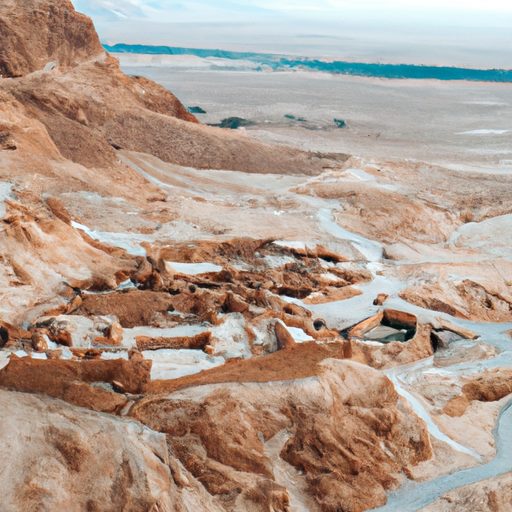Embark on a journey through history as we explore the ancient fortress of Masada, a UNESCO World Heritage Site located in Israel. Our Masada guide provides a richly detailed account of this archaeological marvel, its historical significance, and the intriguing tales that surround it. This blog post offers an in-depth look at the fortress, insightful details, and practical tips for visitors.
"Masada: A Sturdy Bastion in the Wilderness?"
Nestled amidst the rugged beauty of the Judean Desert, Masada stands tall as a testament to human resilience and ingenuity. As a Masada guide, I have had the privilege of exploring this ancient fortress and unraveling its intriguing past. The imposing structure, perched on a rocky plateau, captivates visitors with its sheer grandeur and strategic location. It served as a stronghold for various civilizations throughout history, but it was the Jewish rebels who made their last stand here that truly sealed its place in the annals of history.
Stepping foot on Masada tour, one cannot help but marvel at the impressive engineering feats that were accomplished in such a remote and unforgiving environment. The fortress was built with remarkable precision, utilizing the natural landscape to its advantage. The sturdy walls and well-preserved remains offer a glimpse into the past, where life was not for the faint-hearted. The desert climate, with scorching temperatures and scarce resources, presented an arduous challenge for its inhabitants. Yet, Masada withstood the test of time, a testament to human perseverance.
The isolation of Masada in the wilderness also adds to its mystique. Surrounded by steep cliffs and vast expanses of desert, it served as a refuge from external threats. The natural defenses of the fortress, combined with its strategic position overlooking the Dead Sea, made it an impregnable fortress. This sense of fortification resonates with visitors, as they imagine the daily lives of those who sought solace within its walls. The remote location not only protected its inhabitants but also provided them with a vantage point to monitor any approaching danger, ensuring their survival in this harsh environment.
Masada's location also offers breathtaking views that further enhance the visitor's experience. Standing atop the fortress, one can marvel at the panoramic vistas of the surrounding desert and the shimmering waters of the Dead Sea. The stark contrast between the barren wilderness and the vibrant blue of the sea creates a mesmerizing spectacle. It is a reminder of the resilience of the human spirit, as well as the awe-inspiring power of nature.

An aerial view of Masada showcasing its strategic location and imposing structure.
"How did Masada become a symbol of Jewish Heroism?"
Masada's transformation into a symbol of Jewish heroism stems from the tragic events that unfolded within its walls during the First Jewish-Roman War. In 73 CE, after a long and valiant resistance against the Roman forces, the Jewish rebels residing in Masada made a collective decision that would forever etch their names in history. Rather than face certain capture and enslavement by the Romans, they chose to take their own lives, embracing death over surrender.
This act of defiance and sacrifice resonated deeply within the Jewish community, becoming a powerful symbol of resistance against oppression. The story of Masada became a rallying cry for Jewish identity and the preservation of their heritage. It symbolized the unwavering determination to fight for freedom and independence, even in the face of overwhelming odds.
The heroic stand of the Jewish rebels in Masada has been immortalized in history through various literary and artistic works. It has become an integral part of Jewish folklore and a source of inspiration for generations. The story of Masada is taught in schools and commemorated during Jewish holidays and remembrance ceremonies.
Moreover, Masada's significance expanded beyond the Jewish community, resonating with people around the world who admire the courage and resilience displayed by the rebels. It serves as a universal symbol of human strength and the pursuit of freedom, transcending religious and cultural boundaries.
What can we learn from the archaeological treasures of Masada?
The archaeological treasures of Masada offer a wealth of insights into the lives and struggles of the people who inhabited this ancient fortress. Excavations have revealed a remarkable array of artifacts and structures that shed light on various aspects of their daily existence.
One of the key lessons we can glean from the archaeological discoveries at Masada is the remarkable engineering prowess of the inhabitants. The complex system of cisterns, aqueducts, and water channels found at the site showcases their ingenuity in harnessing and preserving water in the arid desert environment. This speaks to their resourcefulness and adaptability, offering valuable lessons in sustainable living and conservation even in challenging circumstances.
Furthermore, the architectural remains at Masada provide insights into the social and cultural aspects of the community. The opulent palaces, luxurious bathhouses, and elaborate fortifications bear witness to the wealth and power of the ruling elite, while the modest dwellings of the common people highlight the socio-economic disparities of the time. By studying the layout and design of these structures, we can gain a deeper understanding of the social dynamics and hierarchies that existed within the fortress.
In addition to the physical artifacts, the archaeological findings at Masada also contribute to our understanding of the historical context and events that unfolded. The discovery of coins, pottery, and other material culture helps to establish a timeline and corroborate historical accounts. It allows us to piece together the story of Masada and its significance in the larger historical narrative of the region.

A photo capturing the archaeological finds from Masada, including pottery, coins, and remnants of ancient structures.
"Where does Masada fit in the larger context of world history?"
Masada holds a significant place in the larger context of world history, particularly in relation to the ancient civilizations of the Mediterranean and the conflicts that shaped the region. This fortress played a crucial role during the First Jewish-Roman War, which took place from 66-73 CE. The story of Masada's fall to the Romans and the subsequent mass suicide of its Jewish defenders has become emblematic of Jewish heroism and resistance.
The events at Masada symbolize the struggle of oppressed peoples against imperial powers throughout history. The determination and sacrifice displayed by the Jewish rebels have resonated with people worldwide, making Masada a symbol of defiance and resilience. This dramatic tale has captured the imagination of writers, artists, and historians, ensuring that the legacy of Masada endures.
Additionally, Masada's archaeological significance extends beyond its role in the Jewish-Roman conflict. The site provides valuable insights into the military strategies and technologies of the time, as well as the cultural interactions between the Romans and various Jewish factions. It showcases the Roman Empire's expansion and influence in the region, shedding light on the dynamics of power and conquest during that era.
Masada stands as a testament to human resilience and the spirit of freedom. The remnants of this ancient fortress whisper tales of courage, struggle, and sacrifice, making it an essential visit for every history enthusiast. Our Masada guide aims to provide a comprehensive understanding of this ancient marvel, while also inspiring visitors to explore and appreciate the historical richness of this site.
הכותבת אינה רופאה, אין להתייחס לכתבה כאל המלצה לביצוע או ייעוץ כלשהו. עליך לדבר קודם עם מומחה מוסמך בצורה אישית לפני נקיטת פעולה כלשהי



